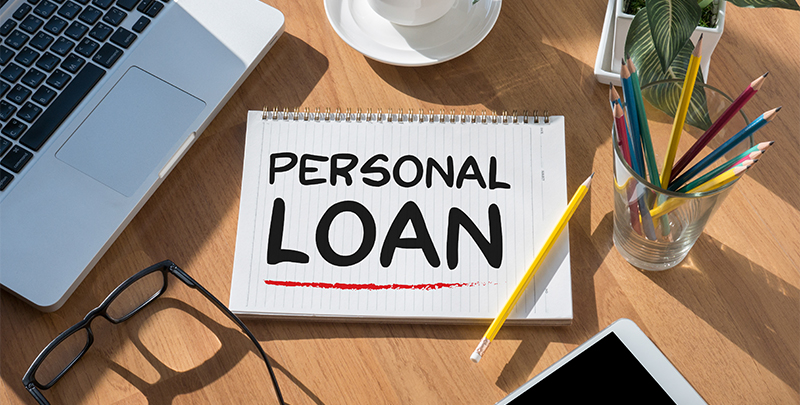Understanding the Differences Between Secured and Unsecured Personal Loans
22-03-2024

Personal loans serve as invaluable financial tools for individuals seeking to address various needs and aspirations, from debt consolidation to home renovations or unexpected expenses. However, not all personal loans are created equal. Understanding the differences between secured and unsecured personal loans is crucial for borrowers to make informed decisions and choose the option that best aligns with their financial goals and circumstances. In this comprehensive guide, we'll delve into the intricacies of secured and unsecured personal loans, exploring their features, benefits, and considerations.
NTC Finance offers personalized solutions through their personal loans, catering to individual financial needs with flexibility and efficiency. Whether it's for unexpected expenses, home renovations, education costs, or debt consolidation, NTC Finance provides accessible loan options tailored to each customer's circumstances. With competitive interest rates, manageable repayment plans, and streamlined application processes, NTC Finance ensures a hassle-free experience for borrowers seeking financial assistance.
Secured Personal Loans: Fortifying Borrowing with Collateral
Secured personal loans are loans that are backed by collateral, typically an asset owned by the borrower, such as a home, vehicle, or savings account. The collateral serves as a form of security for the lender, reducing their risk in the event that the borrower defaults on the loan. Secured loans may offer lower interest rates and higher loan amounts compared to unsecured loans, reflecting the reduced risk for the lender.
Features of Secured Personal Loans:
1. Collateral Requirement: Secured personal loans require borrowers to pledge collateral to secure the loan. The value of the collateral often determines the loan amount and interest rate offered by the lender.
2. Lower Interest Rates: Because secured loans are backed by collateral, lenders typically offer lower interest rates compared to unsecured loans. This can result in significant cost savings for borrowers over the life of the loan.
3. Higher Loan Amounts: Secured loans may allow borrowers to access higher loan amounts than unsecured loans, as the collateral provides assurance to the lender against potential losses.
4. Longer Repayment Terms: Secured loans often come with longer repayment terms, allowing borrowers to spread out their payments over a more extended period. This can help borrowers manage their monthly cash flow and budget more effectively.
5. Risk of Asset Seizure: In the event of default, lenders have the right to seize and sell the collateral to recover the outstanding loan amount. Borrowers risk losing the pledged asset if they are unable to repay the loan according to the agreed-upon terms.
Examples of Secured Personal Loans:
1. Home Equity Loans: Borrowers can use the equity in their homes as collateral to secure a loan, typically at a lower interest rate than unsecured options.
2. Secured Auto Loans: Car loans are often secured by the vehicle being financed, allowing borrowers to access financing at competitive rates based on the car's value.
3. Secured Personal Lines of Credit: Some lenders offer secured lines of credit, where borrowers pledge collateral to access revolving credit for various purposes.
Unsecured Personal Loans: Flexibility Without Collateral
Unsecured personal loans are loans that do not require collateral, relying solely on the borrower's creditworthiness and promise to repay the loan. These loans are typically granted based on factors such as credit score, income, employment history, and debt-to-income ratio. Unsecured loans offer greater flexibility and accessibility for borrowers but often come with higher interest rates and stricter eligibility requirements compared to secured loans.
Features of Unsecured Personal Loans:
1. No Collateral Requirement: Unsecured personal loans do not require borrowers to pledge collateral, making them accessible to individuals who may not have valuable assets to use as security.
2. Higher Interest Rates: Because unsecured loans entail greater risk for lenders, they often come with higher interest rates compared to secured loans. Borrowers with excellent credit may qualify for lower rates, but rates can still be relatively high compared to other forms of financing.
3. Lower Loan Amounts: Unsecured loans typically offer lower loan amounts compared to secured loans, reflecting the increased risk for lenders without collateral to secure the loan.
4. Shorter Repayment Terms: Unsecured loans may have shorter repayment terms compared to secured loans, requiring borrowers to repay the loan within a relatively brief period.
5. Creditworthiness as Key Factor: Lenders evaluate borrowers' creditworthiness based on factors such as credit score, income, and employment history when determining eligibility and loan terms.
Examples of Unsecured Personal Loans:
1. Signature Loans: Also known as character loans, signature loans are unsecured loans granted based on the borrower's creditworthiness and signature, without requiring collateral.
2. Personal Lines of Credit: Unsecured lines of credit provide borrowers with access to revolving credit, allowing them to borrow funds as needed up to a predetermined credit limit.
3. Credit Cards: Credit cards are a common form of unsecured financing, providing cardholders with a revolving line of credit to make purchases and repay over time.
Factors to Consider When Choosing Between Secured and Unsecured Personal Loans:
1. Creditworthiness: Borrowers with excellent credit may qualify for lower interest rates and more favorable terms on unsecured loans, while those with less-than-perfect credit may benefit from secured options.
2. Collateral Availability: Individuals who own valuable assets such as a home or vehicle may prefer secured loans to access higher loan amounts and lower interest rates.
3. Loan Amount and Repayment Term: Borrowers should consider their financial needs and repayment capabilities when choosing between secured and unsecured loans, as well as the impact of interest rates and repayment terms on their overall financial health.
4. Risk Tolerance: Borrowers should weigh the risk of losing collateral against the potential cost savings and benefits of secured loans, balancing their risk tolerance with their financial goals.
Conclusion:
Secured and unsecured personal loans offer distinct advantages and considerations for borrowers seeking financing solutions. While secured loans provide access to higher loan amounts and lower interest rates backed by collateral, unsecured loans offer greater flexibility and accessibility without the need for collateral. Understanding the differences between these two types of loans is essential for borrowers to make informed decisions based on their financial goals, creditworthiness, and risk tolerance. By evaluating the features, benefits, and considerations of secured and unsecured personal loans, borrowers can choose the option that best aligns with their needs and circumstances, empowering them to achieve their financial objectives with confidence.



